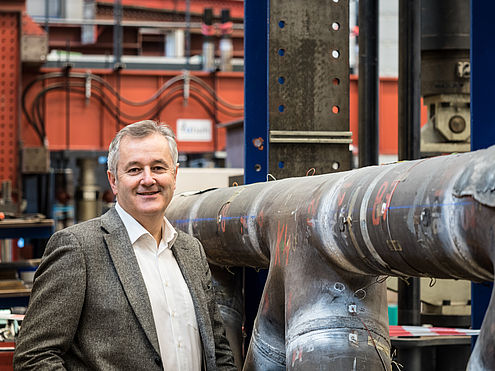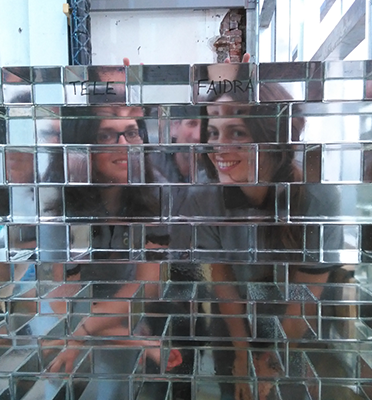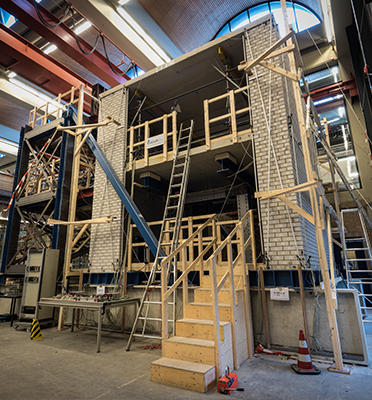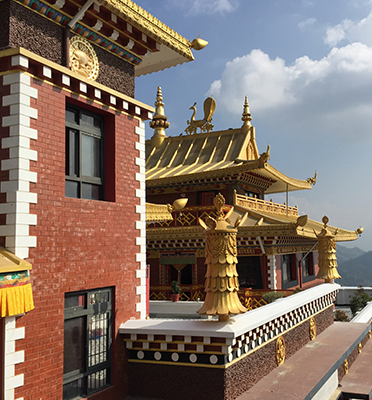Since last October, TU Delft has had a new, official, full-time professor of steel and hybrid structures, Professor Milan Veljkovic. Before being appointed to this position in Delft he held the chair for steel structures at the technical university of Luleå in Sweden. In Delft, he wishes to focus on forging further cooperation between Dutch and foreign construction companies and TU Delft scientists. He also plans to invest new energy in innovative construction opportunities featuring steel.
Veljkovic’s appointment is not his first introduction to TU Delft. In the early 1990s he visited the university as part of his PhD research during which he acquired knowledge and research experience.
What were you working on during your time as a PhD in Delft?
"It was the start of my research into composite girders a floor system that consists of steel and concrete. At the time, Delft already had a good reputation as a technical university as well as a developer of concrete calculation models. I came to Delft to conduct experiments, but in the meantime became involved in the work of the research group I was visiting. They were developing a new construction standard which greatly benefited me when it came to testing my own hypothesis. We also contributed to the development of standardised, analytic tests that were used for the Eurocodes, the European standards and guidelines for the construction industry. It was a pleasant, educational period for me."
Which structural subjects have you been examining in recent years?
"My background knowledge in the field of composite construction materials gives me a strong connection with construction companies. For instance, in the industry demand arose for a more simple, cheaper connecting piece to be developed for tubular segments. This can be of use for building wind turbines, for example. Together with researchers from other European universities I have conducted a great deal of research into this in recent years. Together, we have discovered a new type of connector that is more resistant against long-term stress. The discovery is also useful for other structures."
What do you wish to work on as the new professor?
"Of course, I have only just arrived, this group did not have a permanent professor for some time. A lot is yet to be set in motion. This research group has already accumulated a massive quantity of expertise and knowledge in the field of steel structures and civil engineering works. My main goal as a professor is to enable the research group to tackle new research ideas and projects. To achieve this, I wish to create more cooperation and synergy between companies and universities. I am convinced that this is the best way to generate more research ideas. It is essential for applied structural engineering to link research knowledge to the market. If there is no known solution for a problem then the university is the best place to make discoveries and to test these at our laboratories."
Will you patent inventions?
"As a professor and researcher I don’t have time to also labour on patenting our results, at least not at the moment. I was appointed at this university to primarily increase and disseminate knowledge, employ and supervise new researchers as well as provide good education for students. It’s simply not my priority to engage in patenting and marketing knowledge developed at the university."
But how will new discoveries then reach the business community?
"Interaction between companies and universities is crucial for research into applied structural engineering. In other words, you have to accommodate companies, for instance by having students work on projects for the former. This also gives you, as a researcher, insight into the problems facing the industry. You can subsequently take these problems and study them at the university, searching for broadly-applicable, general solutions.
My idea is that PhD students will ultimately take the step to implement and patent new innovations. Everything depends on whether there is a market for this and whether companies are interested. A researcher can’t start a new company alone. Even if companies are interested, capital will be required, business premises and a touch of luck."
In which fields do you see room for new innovations?
"The innovation of combined construction materials and ultra-strong steel is still underway. It is therefore also important to improve calculation software and possibly develop new software to this end. The existing software was often developed and validated for the analysis of existing problems. However, the development of safe, sustainable innovations in applied structural engineering is impossible without good analytic tests and calculation software. Another subject that provides room for innovation is the research into building major structures such as bridges, buildings and stadiums more cheaply without compromising safety or structural quality. This can only be achieved by examining new manufacturing methods."
Can you name an example of such an innovation?
"Work is currently underway on the development of windmills that are over 100 m tall. Such windmills are much more efficient producers of energy, but are also more expensive to build. In my opinion a solution could be discovered by using a different technology making such high windmills not much more expensive. That would benefit both companies and society.
Another example is the development of temporary houses that can be manufactured rapidly, are easy to transport and quick to assemble or disassemble at their destination. A lot of research questions remain open to finding the most sustainable solution for both these issues.
It is important to emphasise that everything we do should be characterised by public safety. We should design and construct buildings that are profitable and useful, and which can be safely used for 20 to 100 years. We should consider how to maintain these structures and how, ultimately, we can demolish or refurbish them. The population should – at all times – be confident about safety. Both the reputations of companies and that of our knowledge depend on this."
"I enjoy working on research questions and practical innovations that have a positive impact on my own living environment. This also inspires PhD students. Innovations often develop in an environment that provides space for various competences, experiences and cultures."
But I will repeat that innovation cannot solely take place at the university. The exchange with companies interested in this innovation is of great importance. Only then can you further matters, this is my conviction that I also wish to apply in Delft. Together, we should further study our many different ideas and strive for sustainable solutions that offer our society and planet a better future."
Published: March 2016





